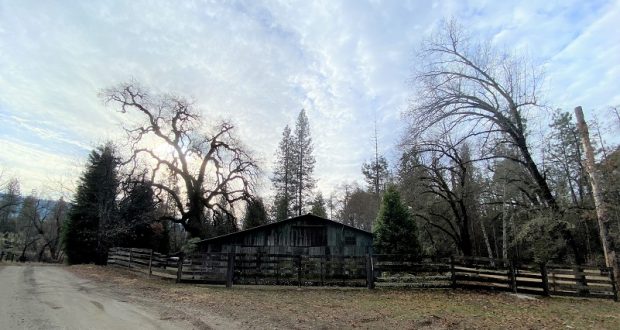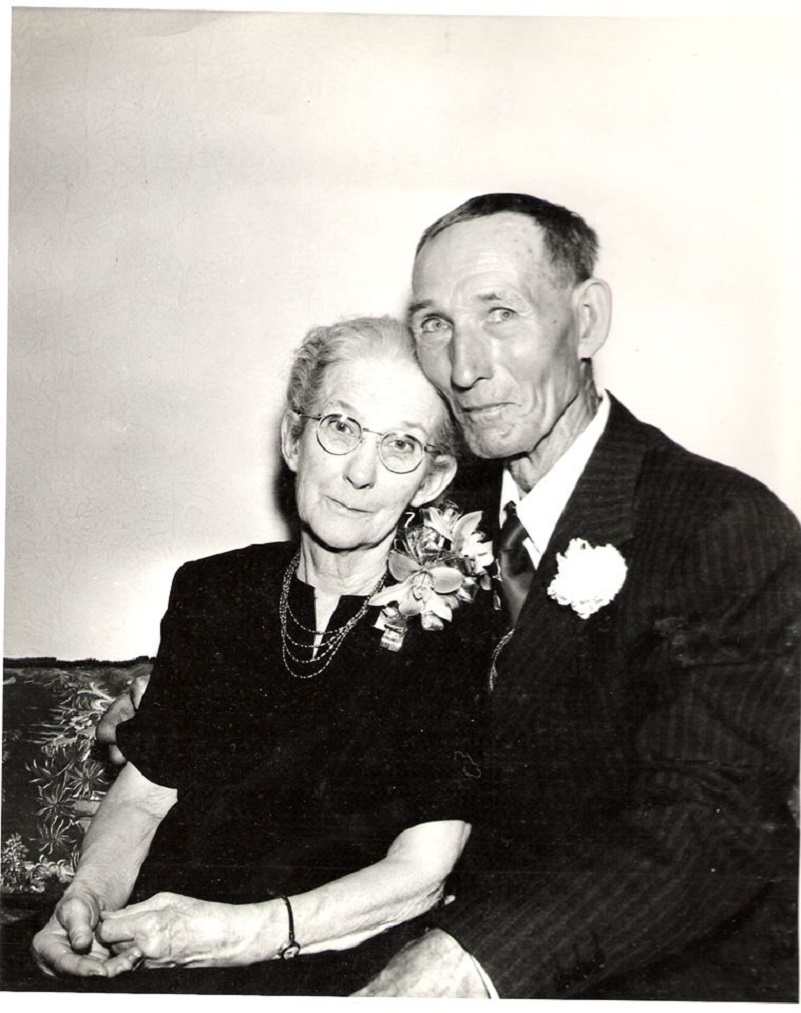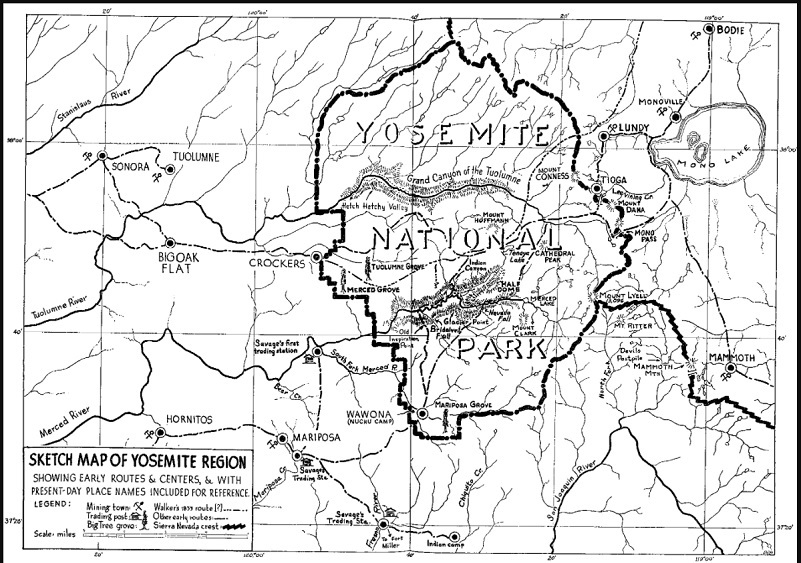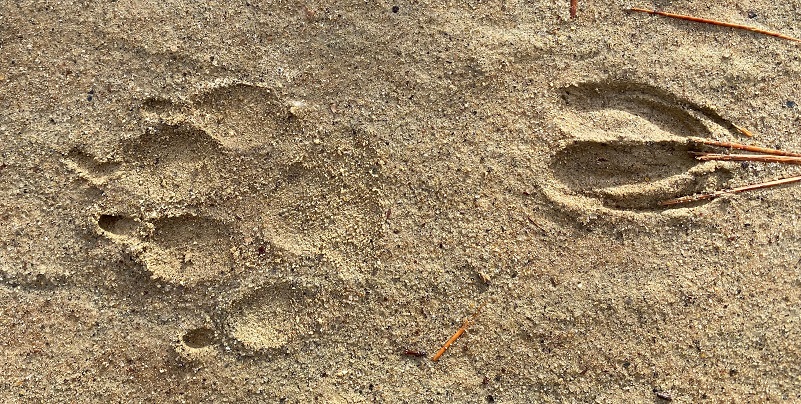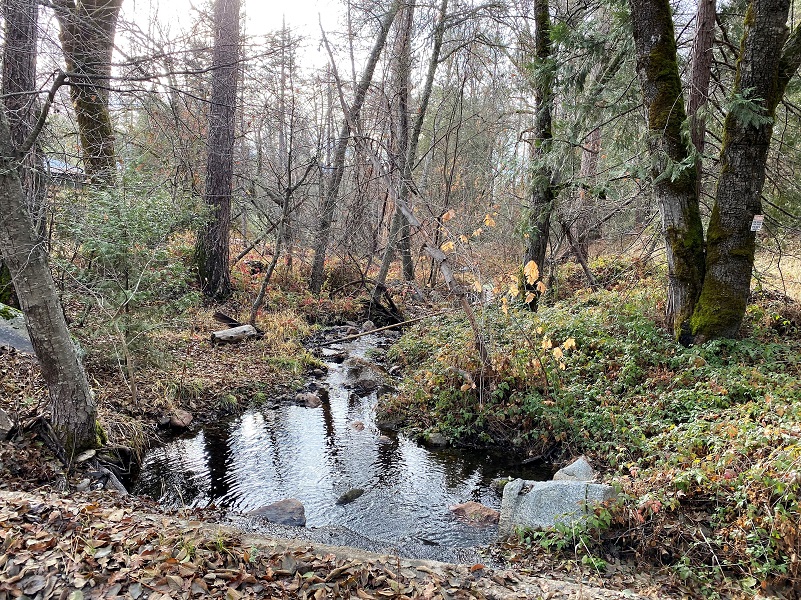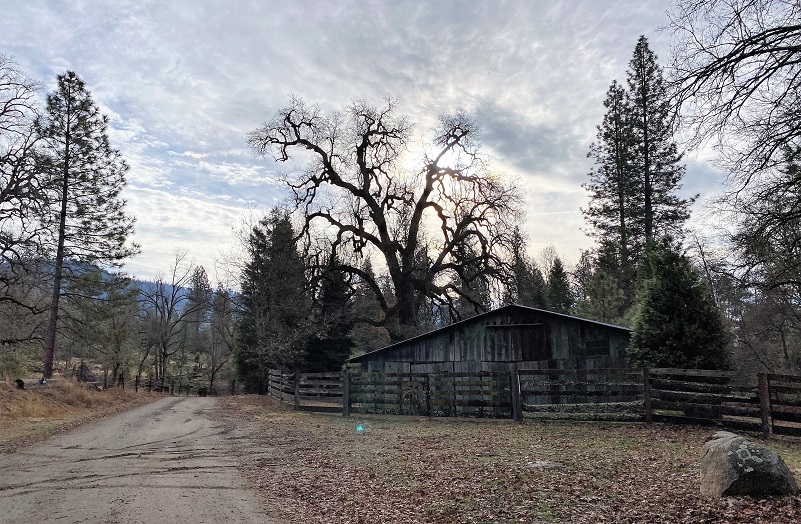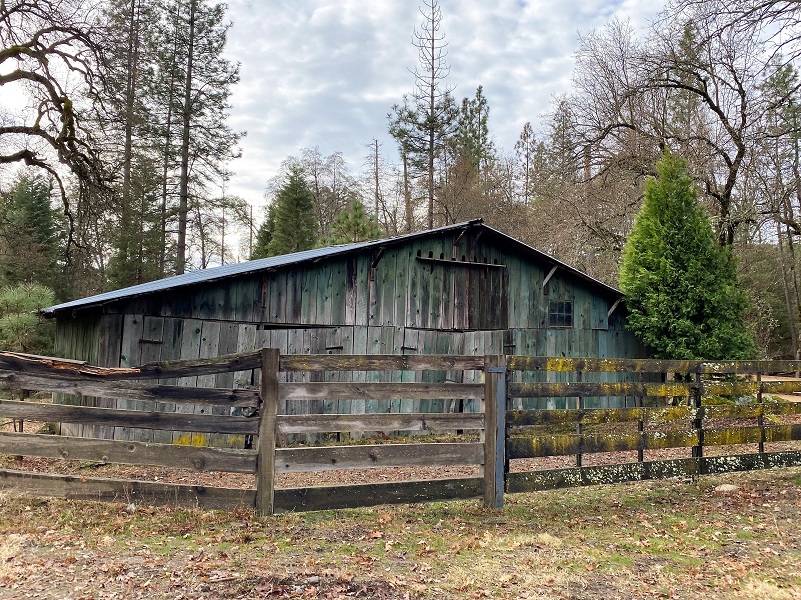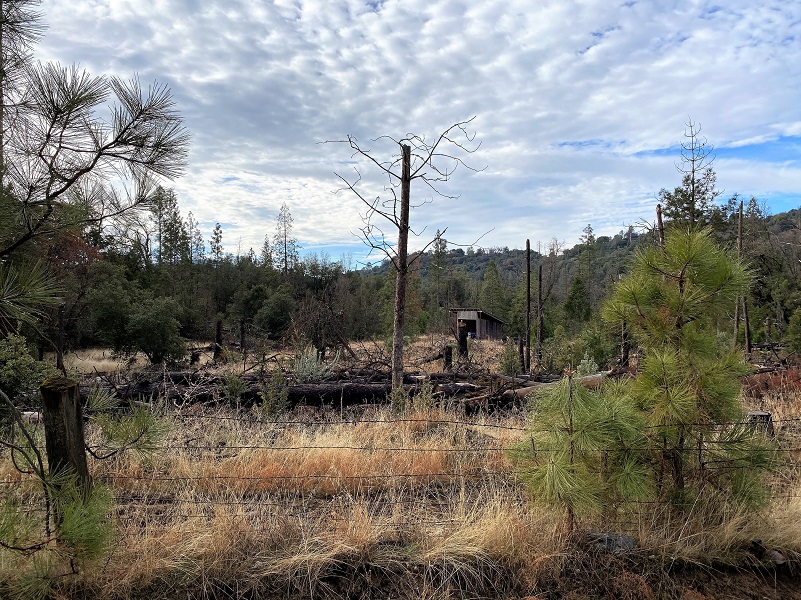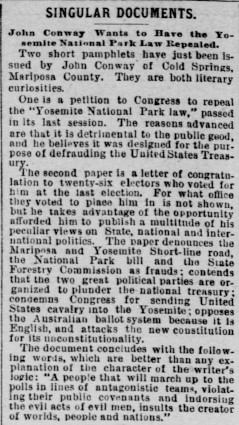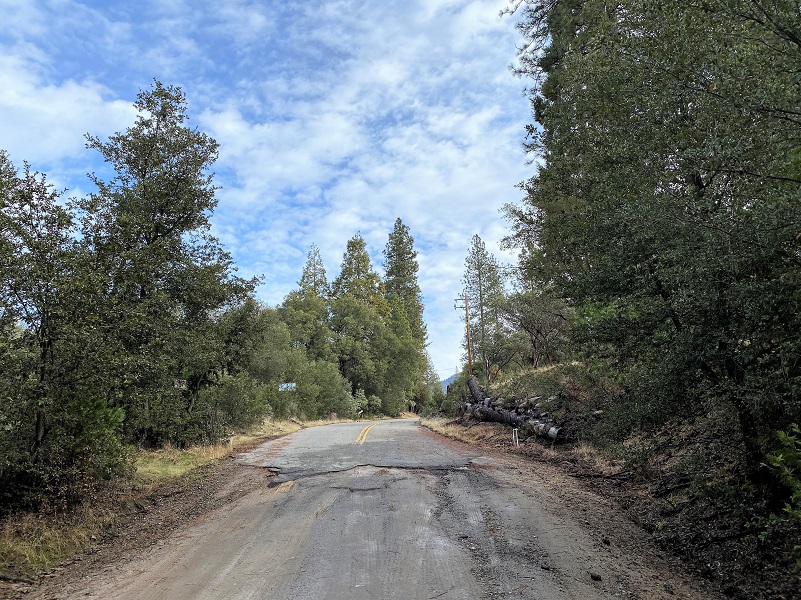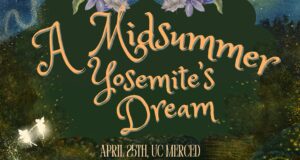Let your imagination go wild. You have been riding on a dusty, bumpy, hot stagecoach all day from Mariposa. Or perhaps the day is freezing cold and you are bundled up the best you can in that stagecoach with your coat and some quilts. You are approaching Cold Spring Stage Stop and sure are looking forward to the break. You will most certainly stretch your legs while the stage changes out the stock, maybe get a cold drink of water, a hot meal or spend the night before traveling on to visit those Giant Sequoias that you have heard so much about.
Those were the thoughts that were going through my head as I continued on my journey through history on the old routes into Wawona. I visited an area where the old Cold Spring Stage Stop was located, where two different routes split, one a bit longer and one a bit steeper. Back in the day, the area was called Cold Spring(s) but today we know it as Ponderosa Basin.
I am trying something a little new, including a link to this track on CALTOPO at the top and under the Maps and Profile Section at the end that you can view or download. Please give me feedback on this change!
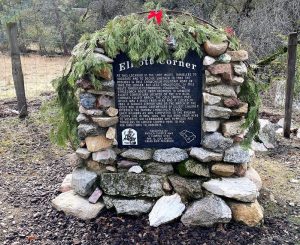 Distance: 4.01 Miles (but you can go shorter or longer)
Distance: 4.01 Miles (but you can go shorter or longer)
Difficulty: Moderate
Elevation Range: 2,935′ to 3,449′
Date: December 30, 2020
CALTOPO: Chowchilla Mountain Road to Cold Springs Loop
Dog Hike: Maybe
Shortly after I turned off of Hwy 49 onto Chowchilla Mountain Road, I made a stop at the E. Clampus Vitus Monument for Elliott Corner erected April 6, 2013 by the Matuca Chapter. The Monument reads:
At this location in the late 1800’s, travelers to Yosemite had to decide whether to take the arduous 14 mile Chowchilla Mountain Road or take the longer, or less challenging, 24 route through Cedarbrook, following the stageroute from Raymond to Wawona. Elliot Corner was located on the 320 acre Charles Elliot Ranch. The Cold Springs Post Office was 3 miles from here and it closed in 1883. A service station was on the ranch in the 1920’s and several generations of Elliot children attended the nearby Chowchilla School. When Highway 40 was completed to the Madera County line in May 1969, the old road from here to Yosemite via Cedarbrook was bypassed and travelers no longer stopped here to ask for directions to Yosemite.
Charles “Charlie” Monroe Elliott and his wife Ida May passed away in 1963 and 1961, both buried in the Mariposa District Cemetery at Mariposa. I located the below obituaries posted by Mary Carpenter and picture posted by Sharon McDonald on Find A Grave, shared with their permission:
Charles Monroe Elliott came first to California in 1897 when he was nineteen years old. His grandmother, Martha Jane (Zickafoose) Westfall and three of his uncles Charles, Sampson and James Westfall and a great uncle, Joel Westfall, had settled near Darrah on what is now called East Westfall Road between Triangle and Chowchilla Mt. Roads in Mariposa County California. In 1901, Charles went back to his birth state of West Virginia and worked as a teamster and a coal miner. On April 20, 1904, he married Ida May Kennedy. In 1907, shortly after a heart rending miscarriage followed by the death of their infant daughter, Mary Elizabeth, Charles and Ida and a two year old son, John, accompanied by Charles’ brother, Will Elliott, came by train from West Virginia to California. They arrived at the Berenda siding and walked to a near-by farm house to wait for the 4:00 P.M. narrow guage train to Raymond. At Raymond, Charles left his wife and child at the home of his aunt, Melinda (Westfall) Davidson and he and his brother walked the several miles to another aunt’s home, Sarah (Westfall) Nutter, who lived at Grant Springs up by Miami Mountain. The next day a cousin, George Nutter, went to Raymond with a wagon and collected Ida, John, their trunks and the other baggage they had brought with them. After living three or four other places temporarily, Charles bought the 160 acre Dunning homestead on July 11, 1910 – the place that is now known as Elliott’s Corner. The Dunning house had burned, so they lived in the barn and wagon shed and built a small frame house out in the field. On January 24,1921, Charles filed state homestead on an adjoining 160 acres and built their first “real” home. The land was not as flat as Elliott’s corner so as soon as the homestead was proved, Charles tore down the house and used the lumber to build a roomy two story house at Elliott’s Corner. While working in the saw mill, Charles wrist got cut by the saw blade and he eventually lost four fingers of his right hand due to the injury. On a snowy night on March 6, 1935, the big house caught fire and burned to the ground. A merciful God woke the family in time to escape. All else was burned to ashes except the barn and gas station. Charles built another house at the corner, but it also burned. The last house that was built is the one still to be found at Elliott’s corner. The family operated a gas station at the corner while Charles worked in the saw mills, as a look out on Miami Mountain and Pilot Peak, and as a teamster. The ground was good at Elliott’s Corner so the family raised a large garden in the summer time. Charles made sure his children had milk and meat and plenty of vegetables so they never went hungry. The children of Charles and Ida were John Wesley, Mary Elizabeth, Jessie Myrtle, Charles Robert, Edith Virginia, William Franklin and Ida May. Charles died at Elliott’s Corner.
Ida May Kennedy was born February 3, 1878 in Smithville, Ritchie County West Virginia. Ida’s mother, Anna Elizabeth Mary (Prince) Kennedy, died when Ida was eleven months old. Ida had two half brothers by her father’s first wife, Minerva (Webb) Kennedy, who were older than her, William Edwin & Charles Franklin & one full brother who was also older than her, John Robert Kennedy. Ida married Charles Monroe Elliott on April 20, 1904 in Smithville West Virginia. Shortly after the death of their baby daughter, Mary Elizabeth, Charles & Ida moved to Mariposa County California and settled near Charles’ maternal grandmother, Martha Jane Westfall, and Charles’ maternal uncles, James, Sampson,& Charles Kuykendall Westfall and his two maternal aunts, Melinda Davidson & Sarah Nutter. Charles & Ida purchased the old Dunning homestead at what is now called Elliott Corner and they also homesteaded 160 acres adjoining this property which backed up to the Westfall ranches along what is now called East Westfall Road. Elliott Corner & the homestead property are where Charles & Ida lived the remainder of their life. All of their children attended grammar school at the little Chowchilla School about a quarter of a mile from Elliott Corner and Mariposa County Highschool. A daughter, Jessie (Elliott) Hilton taught two of her siblings at the school years later. Ida died at Elliott Corner in Mariposa County California on January 30, 1961. Her paternal grandparents were Russell Kennedy & Hettie (Pitman) Kennedy. Her maternal grandparents were John Henderson Prince & Drusilla (Webb) Prince. Her father, John Pitman Kennedy, was a Civil War soldier, Company G, 6th West Virginia, for the Union. He entered as a private and was discharged as a sergeant. Ida’s parents are buried in the Webb Cemetery in Smithville, Ritchie County West Virginia. Ida’s children were John Wesley, Mary Elizabeth, Jessie Myrtle, Charles Robert, Edith Virginia, William Franklin, and Ida May Elliott.
Imagine the excitement of visiting Yosemite and heading up this road back in the day, whether it was by wagon, stagecoach or vehicles. As there were several routes into Wawona back in the day, it is no wonder it was a good idea to stop for directions.
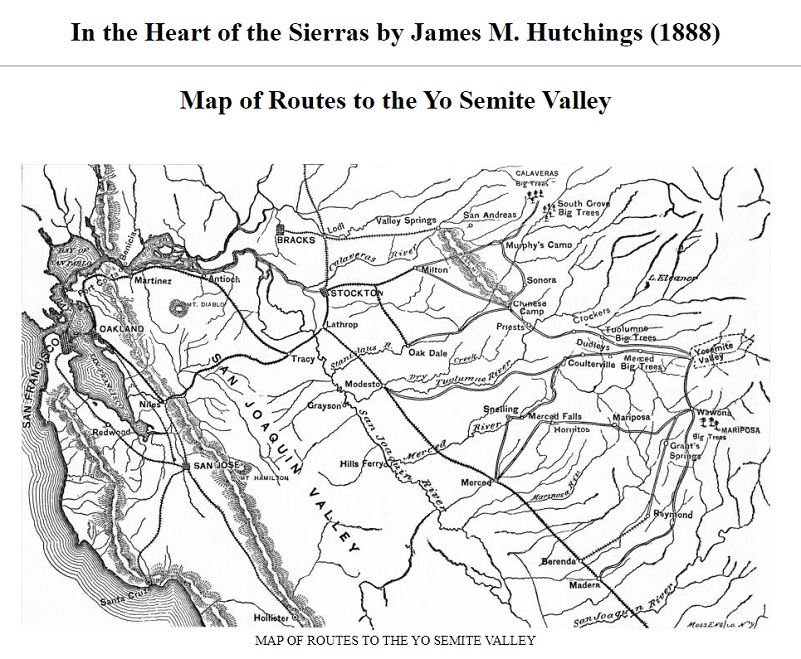
There are many wonderful sources for what the travel on these roads was like. One of those sources is One Hundred Years in Yosemite by Carl P. Russell where he shares the following:
In keeping with this wagon-road building was the steady extension of the Central Pacific Railroad. Stockton, Modesto, Copperopolis, Berenda, Merced, and Madera were, in turn, the terminals. Seven routes to Yosemite made bids for the tourist travel. The Milton and Calaveras route permitted of railroad conveyance to Milton. Those who were induced to take the Berenda-Grants Springs route took the train to Raymond. The Madera-Fresno Flats route afforded railroad-coach transportation to Madera. The Modesto-Coulterville route meant leaving the rails at Modesto. The Merced-Coulterville route involved staging from Merced. The Mariposa route also required detraining at Merced, but the stage route followed took travelers through Hornitos and Mariposa. Those tourists who chose the Milton-Big Oak Flat route left the train at Copperopolis and traveled in the stage to Chinese Camp, Priests, and into the valley on the Big Oak Flat Road. Dodgers, pamphlets, and guidebooks furnished by the competing towns and stage companies produced a confusion to say the least.
The conveyances were of two types. At the height of the season, when travel was heavy and roads dry, the Standard Concord Coach was employed. At other times, a vehicle commonly termed a “mud wagon” was put to use. During this era of horse-drawn vehicles, the trains of pack mules were, of course, replaced by great freight wagons. Today, in driving over the old wagon roads, one is led to wonder how passenger vehicles succeeded in passing the great freight outfits. Some years ago, in searching through the objects left in a deserted house in the ghost town, Bodie, I came upon a manuscript describing staging as it was practiced in that famous mining camp. What the unknown author has to say about the business there applies to neighboring mountain regions, and is a reminder of a phase of life of the ’eighties.
The stage coach is to California what the modern express train is to Indiana, and people unaccustomed to mountain life can form but little conception of the vast amount of transportation carried on by means of coaches and freight wagons.
Even though California may truly be termed the “Eden” of America, yet there is not a county in the state but has more or less traffic for the stage coach, and in the northern and eastern part of the state, especially, there is an entire network of well-graded roads, resembling Eastern pikes. These roads are mostly owned by corporations and, consequently, are toll roads.
Over these are run the fast stages drawn by from two to ten large horses, and the great freight wagons drawn by from fourteen to twenty mules.
The stage lines have divisions, as do railroads, and at the end of each division there is a change of horses, thus giving the greatest possible means for quick conveyance. Over each line there are generally two stages per day, one each way. These carry passengers, mail, and all express traffic. At each town is a Wells Fargo office, and business is carried on in a similar manner to that of railroad express offices. Telegraph lines are in use along the most important roads.
The stage lines have time cards similar to railroads, and in case a stage is a few minutes late, it causes as much anxiety as does the delay of an O. & M. express. A crowd is always waiting at the express office; some are there for business, others through some curiosity and to size up the passengers.
A stage from a mining town usually contains a bar of gold bullion worth $25,000, which is being shipped to the mint. Bullion is shipped from each mine once a month, but people always know when this precious metal is aboard by the appearance of a fat, burly officer perched beside the stage-driver, with two or three double-barreled shotguns. He, of course, is serving as a kind of scarecrow to the would-be stage robbers.
The average fare for riding on a stage is 15 cents per mile.
The manner in which freight is transported is quite odd, especially to a “Hoosier.” Wagons of the largest size are used. Some of these measure twelve feet from the ground to the top of the wagon bed; then bows and canvas are placed over this, making a total height of fifteen feet, at least. Usually three or four of these wagons are coupled together, like so many cars, and then drawn by from fourteen to twenty large mules. All these are handled by a single driver. A team of this kind travels, when heavily loaded, about fifteen miles per day, the same being spoken of always as the slow freight. In some mining districts, however, where business is flush, extra stages are put on for freight alone. These are termed the fast freights. This business involves a large capital, and persons engaged in it are known as forwarding companies. Even the freight or express on goods from New York is sometimes collected a hundred miles from any railroad, and so even to those living in the remote mountain regions, this is about as convenient, and they seem to enjoy life as well as if living in a railroad town.
The sketch map shows the Yosemite National Park Boundary as of 1946, which at one time included Mount Ritter and the present Devils Postpile National Monument.
Trying to follow the route of the old 14 mile stagecoach route up to Chowchilla Mountain Road, I decided to walk it in chunks, starting on Chowchilla Mountain Road just like I would be stopping at the Cold Spring Stage Stop. I drove up Chowchilla Mountain Road until I found the first wide spot to park my car then I started walking. The road was in good shape and I could have driven my entire adventure, but I wanted to walk in the tracks of those old wagons, stagecoaches and travelers back in the day. Walking up the dirt road had a bonus because I could easily pick out animal tracks that included coyote, deer, squirrel, Mountain Lion and bobcat.
The road soon reached Cold Spring Meadow area which is on private property. How could I not wonder what it must have been like if I was a passenger on that dusty, bumpy stage, knowing that I would soon stop at the Cold Spring Stage Stop?
The ascent of Chowchilla Mountain began near John Conway’s at Cold Spring. In the early 1860s John Conway built an Inn, known as Conway Place and later known as Cold Spring Inn. It was a Stage Stop with two barns and a livery stable. Later, from August 15, 1879 to September 17, 1883, Cold Spring had a post office and Henry Washburn contracted to deliver the mail. A fire destroyed it in 1930.
As I walked by the old location of the Stage Stop, I wondered about John Conway and when I got home I located obituaries for him.
John Conway was also active in trying to repeal the Yosemite National Park Law, among other issues. you can read more on this link on Newspapers.com.
I soon reached pavement.
Here is another tie to Cold Spring. In earlier blogs, I had written about John Eldridge “Jack” LaTouche, a friend of John Ruffin “Ruff” O’Neal where O’Neals Meadow got its name. Both of these men had a tragic ending to their lives that I covered in the blogs.
LaTouche had a cabin by Miami Lodge in the timber above Miami Mountain Road. The Madera Flume and Trading Company (which was later purchased by the Madera Sugar Pine Company) owned the property surrounding LaTouche’s place. Loggers were cutting timber around his house and told him to get out because they were going to fall the timber and if he didn’t leave, they might fall a tree though his house. He owned the land and didn’t think that they had a right to cut the timber, so he didn’t leave. The loggers cut a huge tree which did fall through the cabin and killed him.
LaTouche’s life has quite the mystery and why he chose to change his name from Phelen after the Civil War is a mystery. He married Phoebe/Phebe Ellen Branson November 24, 1884 at her parents house in Snow Creek (Darrah). They had 4 children, the first born at Cold Spring (Ponderosa Basin) and the last two children born at Twin Springs near the Westfall Burial Ground.
On the 1880 census Phoebe’s family was living in Hornitos. Her father was Isaac Branson, born 1835 Missouri, a farmer and her mother’s name was Eliza, born 1835 Kentucky. 5 siblings are in the house and the first child to be born in California was Phoebe, the older ones born Missouri. Three other Branson families, Joesph, Thomas and John heads of house, are living next door. I figured out that Joseph and Thomas were sons of John Sevier Branson next door. I suspect that Isaac could have been a brother of John Sevier but not positive.
I reached the corner of Chowhcilla Mountain and Harris Cutoff Roads, looping my way back on Harris Cutoff toward my car.
I didn’t talk much about the other route, which I walked much of last spring. By 1866 a wagon road had been completed from Mariposa to a point twelve miles from the South Fork of the Merced River (Wawona). Clark and Moore organized the Mariposa Big Trees and Yo Semite Turnpike Company in February 1870. They hired John Conway to complete the last twelve-mile segment of the toll wagon road between Hogan Ranch (Sonny Meadows area), west of the main branch of the Chowchilla River, and Clark & Moore’s Station (Wawona). Clark’s Station opened in May 1870. When John Conway built a new road, the horses and mules picked their way along the trail because they chose the easiest grade, then he drove them back and forth to pack the ground, and then he enlarged the roadbed. The road, called the Mariposa and Yosemite Stage Road, was completed and opened for use by wagons July 23, 1870.
I’ve hope to explore more of these old roads, discovering interesting history on those adventures.
Dog Hike? Maybe
This could be a good dog hike if your dog is a good fit. I walked through a residential area and there were dogs but all were fenced on the day I visited. The road is lightly traveled by vehicles so you would need to keep an eye open for a vehicle coming around one of the curves. I would imagine in the summer that you could run into a rattlesnake out here also. This is mountain lion country, along with other wildlife that you could encounter. Running water for your dog could be an issue as the water I saw was on private property. You would probably need to pack dog water.
Doarama:
What is a Doarama? It is a video playback of the GPS track overlaid on a 3 dimensional interactive map. If you “grab” the map, you can tilt it or spin it and look at it from different viewing angles. With the rabbit and turtle buttons, you can also speed it up, slow it down or pause it.
Chowchilla Mountain Road To Cold Springs Doarama
Maps and Profile:
Sources:
Dubel, Zelda Garey, To Yosemite by Stage, Zulu.com, Third Edition, 2011.
John Conway Death Notice Mariposa Gazette
California Digital Newspaper Collection
Charles Monroe Elliot Find a Grave
Wawona’s Yesterdays (1961) by Shirley Sargent
Rare brochure for Yosemite Stage Co. 1900
Rules and Regulations Yosemite National Park, United States National Park Service, 1925
One Hundred Years in Yosemite (1947) by Carl P. Russell
Ancestry.com, Census Year: 1880; Census Place: Magoon, Mariposa, California; Roll: 68; Page: 180D; Enumeration District: 041
1884 Great Register of Mariposa County – Developed by Tom Margrave
John LaTouche 1884 Land Patent Map BLM Land Records
John LaTouche 1892 Land Patent Map BLM General Land Records
Mariposa Gazette, Volume XXXVIII, Number 49, 20 May 1893
National Archives and Records Administration. U.S., Civil War Pension Index: General Index to Pension Files, 1861-1934 [database on-line]. Provo, UT, USA: Ancestry.com Operations Inc, 2000.
John E. Phelan Civil War Record Fold 3
Ancestry.com, Census Year: 1870; Census Place: Township 4, Mariposa, California; Roll: M593_74; Page: 147A; Family History Library Film: 545573
Lands of America Real Estate Listing
Miami Lodge Mariposa County History & Research
Miami Lodge Penny Postcards From California
Sierra National Forest ORV Maps
Prior Blogs in this Area:
Walking up a Dirt Road: Worman’s Mill Loop Around Silver Knob December 24, 2020
Walking up a Dirt Road: Westfall Picnic Area up Miami Mtn Road June 2, 2020
Walking up a Dirt Road: Worman’s Mill Loop Along Sunny and O’Neals Meadows May 20, 2020
Walking up a Dirt Road: Worman’s Mill to Cedarbrook, Up and Around O’Neal’s Meadow Loop May 13, 2020
Walking up a Dirt Road: Worman’s Mill to O’Neals Meadow Loop May 5, 2020
Walking up a Dirt Road: Worman’s Mill to the Lone Sequoia April 28, 2020
Walking up a Dirt Road: Worman’s Mill to Pilot Peak April 22, 2020
Walking up a Dirt Road: Worman’s Mill to O’Neals Meadow April 15, 2020
Walking up a Dirt Road: Worman’s Mill to Sunny Meadows April 10, 2020
Walking up a Dirt Road: Worman’s Mill and Beyond March 31, 2020

